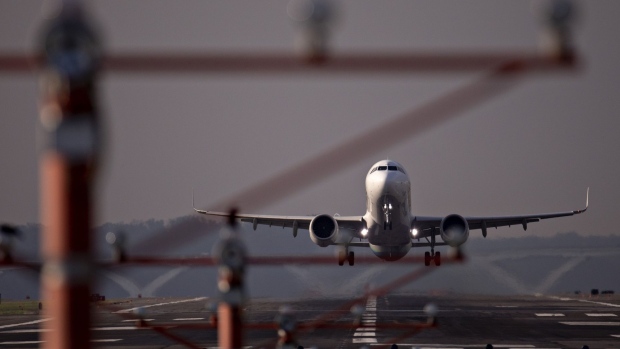May 28, 2020
American Airlines to Cut 30% of Management and Support Staff
, Bloomberg News

(Bloomberg) -- American Airlines Group Inc. plans to cut 30% of its management and support staff as it tries to weather the dramatic downturn brought on by the coronavirus pandemic.
The move was announced in a letter to staff from Elise Eberwein, American’s executive vice president of people and global engagement. Other cost-saving steps include requiring staff to take 50% of their vacation by Sept. 30 and not allowing untaken days to roll into 2021. The airline is also offering a new voluntary early out program that staff can apply for by June 10.
“Although our pre-pandemic liquidity, the significant financial assistance provided by the government, and the cash we’ve raised in the capital markets provide a foundation for stability, we need to reduce our cost structure, including our most significant expense — the cost of compensation and benefits,” Eberwein wrote. “We must plan for operating a smaller airline for the foreseeable future.”
An $85 Billion Airline Rescue May Only Prolong the Pain
The coronavirus outbreak and subsequent travel restrictions have put airlines the world over under immense pressure. United Airlines Holdings Inc. said in early May it plans to cut at least 30% of its managerial and administrative jobs, while several carriers elsewhere have collapsed or sought bankruptcy court protection, including Latin America’s biggest this week.
American’s Chief Executive Officer Doug Parker said Wednesday that bankruptcy isn’t among the options he’d consider, pushing back against rumors that the debt-laden carrier would be forced down that route. “Bankruptcy is failure,” he said. “We’re not going to do that.”
The global airline industry’s total debt could balloon 28% this year to $550 billion, which includes $123 billion in financial aid from governments, the International Air Transport Association said Tuesday.
“Government aid is helping to keep the industry afloat,” IATA Director General Alexandre de Juniac said in a statement. “The next challenge will be preventing airlines from sinking under the burden of debt that the aid is creating.”
©2020 Bloomberg L.P.